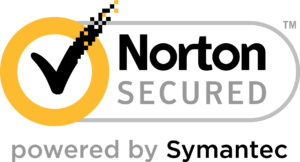How Trust Is Gained Between Business and Development
The Institute of British Sign Language (iBSL) is a registered charity in England. The trust between these two entities can be gained through a number of mechanisms. A trustee-manager manages the Trust, which is run by the Institute of British Sign Language. The trust can be built by empowering staff, believing in their ideas, and establishing mutual understanding. Trust can also be gained by developing a culture of accountability.
Authenticity
Authenticity is about being who you are, walking the walk, and making decisions based on those core values. A strong authentic brand builds trust, loyal customers, and a positive reputation. Here are some ways you can apply authenticity in your business. Follow the tips below and create a successful brand. You may even want to apply authenticity in your personal life. You’ll soon see the benefits. But first, let’s examine the definition of authenticity.
Authenticity is important in the digital age. In the past, companies would oversell and overrepresent themselves to generate sales. However, savvy consumers forced companies to rethink their marketing practices. Now, you can create a brand that reflects the people’s perception of you. In today’s society, consumers want authenticity in everything from their health to their relationships with brands. Authenticity allows businesses to connect with their customers and encourage healthy engagement.
As a business grows and evolves, you can also become authentic in the eyes of customers. In order to gain authenticity in the eyes of your customers, you must share your story with your audience. You can do this by promoting a unique approach or a useful method. The top-rated authentic brands have a strong commitment to innovation. These brands include Burt’s Bees, PayPal, and Amazon.
When you integrate your corporate identity with the truth of your organisation, it is easier to be authentic in the workplace. You can motivate employees to do their best, build a trusting environment, and make decisions based on your core values. Moreover, being authentic is easier when you’re “fit” with the people around you. However, it is important to have a deep understanding of your values and beliefs before you start implementing change.

Mutual understanding
Building mutual understanding with business is a critical part of the IT-business relationship. When business leaders seek to understand the IT side of a company, they must first understand what it is they are trying to accomplish. Developing mutual understanding is easier when both sides have a shared perspective and an approach that is based on listening. In this article, we’ll explore some of the key elements that help develop mutual understanding between business and IT.
The first component of mutual understanding is based on the customer’s perspective. For example, a customer might be incredibly dissatisfied with a restaurant’s waitress, but the employee understands his or her customer’s reaction and then takes action to change it. For example, the waitress in the restaurant could have changed the experience for a customer who was complaining about the service from a window table to a table closer to the main dining room.
Another factor contributing to mutual understanding is experience with the complementary role. When the employees in the same organization encounter each other regularly, they will feel more comfortable dealing with the same individual. Furthermore, strong, complex scripts will facilitate mutual understanding. Investment in training and communications scripts can help employees create subscripts for errors and obstacles. Ongoing training should also include experience in a complementary role. This should be a part of ongoing training to maintain mutual understanding and boost the performance of both sides of the business.
In order to establish mutual understanding, the parties must share the same goals. Mutual understanding can be achieved through the creation of a shared mission and vision, but it is difficult to achieve without a shared set of values. Mutual understanding is crucial to the success of any project. Without mutual understanding, no one can meet the goals of the project. As such, the participants may experience delays and frustration, which hinders their progress and increase the costs of interaction.
Transparency
Developing a culture of transparency starts with identifying the most important metrics for your organization. These metrics should be measurable, and should be based on the objectives of your organization and not just the individual employees. Transparency builds trust and helps people align with your strategic priorities. It also helps people find solutions and overcome obstacles more quickly. Transparency also promotes open communication, which ultimately results in better solutions.
The benefits of transparency can be felt at all levels of a company. First of all, it increases the chance of generating customer loyalty. Transparency fosters employee and consumer trust. It can be difficult to create an organization with a culture of transparency without a commitment at every level. Second, it can’t be achieved by executive decree. It requires an organization’s entire management team to work towards this goal. Third, transparency is important for business, not just in development.
Third, transparency can build trust between business and development. Keeping customers informed of the status of their orders is important. Long and uncertain wait times make customers feel powerless and frustrated. Automated processes don’t communicate the operational steps. If possible, provide customers with updates on their orders via email or tracking codes. It’s the same principle with mailing services. The customer can track their shipment status through tracking codes and be informed via email.
In addition to promoting customer loyalty, transparency boosts efficiency. By focusing on what the firm does well, the organization can improve its performance. Transparency also strengthens the bond of trust between the company and its clients. Transparency also increases the value of brand. Informed customers will be more likely to stay with an organization after a positive experience. By improving the trust between business and development, customers will become loyal to a company that offers transparency.
Accountability
Achieving higher levels of accountability is important for a high-trust organization. This type of accountability requires clear expectations and consistent exemplification. It also creates a positive, principled work environment, and is key to achieving high levels of performance. Accountability can be achieved through a variety of methods, including a culture of openness and communication. Let’s look at a few of these methods.
When working with large organizations, accountability is a key factor. Employees can make an impact on company policies and decisions by contributing to various aspects of the organization. Accountability has also become an increasingly important topic in discussions about the legitimacy of global institutions. The issue of accountability within these organizations has been raised as a concern among stakeholders and critics, causing an increase in the pressure on governments to ensure they follow the rules.
In order to build accountability, leaders must be committed to the company and their people. They must foster team focus and communicate objectives clearly to their teams. Accountability requires taking responsibility for mistakes, and giving credit when it’s due. Accountability must be embedded into performance management, and aligned reward and incentive systems are essential. Accountability should also be a part of the leadership development process, through 360-degree feedback and succession processes.
A culture of personal accountability starts with individuals who are dedicated to doing their jobs. Personal accountability can begin with a job description that clearly describes the responsibilities of their role. If you are unsure of how to create an environment where everyone is held accountable, ask your manager for a copy of the job description. If you can’t be accountable for your actions, you will not be successful in life.
Commitment
The concept of commitment is a key part of development-business relationships, and a strong commitment will increase the likelihood of project success. According to industry data, a strong commitment is directly proportional to perceived value of a project. The ITBC program helps companies build commitment by providing a unique opportunity to foster meaningful relationships with business executives. It’s not just about developing relationships with business leaders, either. Participants will gain insight into the best ways to build these relationships.
Commitment increases as people learn more about the effort, make mistakes, and develop strategies. It doesn’t happen overnight, but grows over time. Commitment decreases when communication and relationship-building is poor, conflicts are unresolved, and leadership commitment is absent. But it doesn’t have to be this way. Here are some ways to foster commitment:
A committed team is a group of individuals who have a common goal. The relative importance of the goal determines the strength of bonds. Projects that support strategic goals tend to attract the strongest commitment. When employees are committed to the project, they’re more likely to work together for its success. The cycle of commitment is an essential aspect of software development, and is one of the most effective methods of driving team performance.
Commitment also involves transparency. Public commitments encourage transparency and goal-driven behavior. A public commitment puts the team in a position to understand unknowns. Without hands-on exploration, the team doesn’t know if it’s working correctly. By delivering complete units of work, the team can develop the understanding necessary to overcome any unknowns. By reducing the risk of surprises, public commitments increase trust between business and development.


